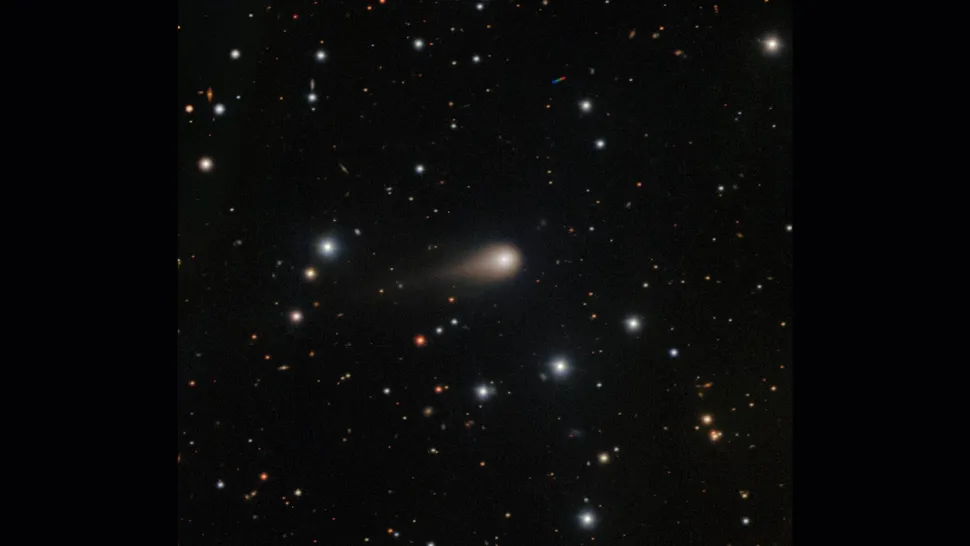Reports suggesting that interstellar comet 3I/ATLAS has “changed color” multiple times are misleading, according to the scientists who studied it. Despite sensational headlines, new data indicates the comet’s blue hue has remained consistent and is not the result of any mysterious transformation.
Comet 3I/ATLAS, only the third known interstellar object to pass through our solar system, has drawn significant attention since its discovery in July. The comet made its closest approach to the sun on October 30, when three sun-facing spacecraft captured detailed imagery of the visitor’s rapid brightening.
In a preprint study published on arXiv, researchers noted that 3I/ATLAS appeared “distinctly bluer than the sun,” contradicting earlier observations showing its dust as red. This sparked widespread claims that the comet had changed color, supposedly for “unknown reasons.”
However, Qicheng Zhang, a postdoctoral researcher at the Lowell Observatory and one of the study’s authors, clarified that no such dramatic change has occurred. “We don’t have any evidence for the gas coma changing colors,” Zhang told Space.com via email. “Our results just show that the gas coma is still around and continues to contribute substantially to the overall brightness.”
Comets are often described as “dirty snowballs,” composed of frozen gases mixed with rock and dust. When they near the sun, these frozen materials vaporize, forming glowing gas halos known as comas. The solar wind can then push this material into long, luminous tails.
According to Zhang, 3I/ATLAS has only appeared to ‘change color’ once, and that was earlier in the year when its gas coma first brightened as it warmed in sunlight. “As far as we know, the comet just ‘changed color’ once when its gas coma first became visible and bright — and it’s still like that now, only brighter,” he explained.
He also noted that amateur astronomers had already observed the comet’s blue-green gas coma as early as September, before it approached too close to the sun.
Despite these clear explanations, misinformation about interstellar comet 3I/ATLAS has continued to spread online. Some conspiracy theorists have even claimed it’s an alien spacecraft being hidden by the U.S. government during the ongoing government shutdown.
But scientists emphasize that the reality is fascinating enough without speculation. The comet’s passage through our solar system provides a rare opportunity to study materials and conditions from beyond our celestial neighborhood.
Observations of 3I/ATLAS have been captured not only by large facilities like the Hubble Space Telescope, Europe’s ExoMars Trace Gas Orbiter, and China’s Tianwen-1 Mars probe, but also by amateur astronomers using 6-inch telescopes.
NASA’s Mars Reconnaissance Orbiter was scheduled to photograph the comet as it passed near Mars on October 3, but due to NASA’s partial shutdown, no images from that flyby have yet been released.
Comet 3I/ATLAS will make its closest approach to Earth on December 19, passing at a distance of roughly 167 million miles (270 million kilometers). Scientists expect the comet to remain visible to observatories until early next year, continuing to offer valuable insights into the mysteries of interstellar visitors.

